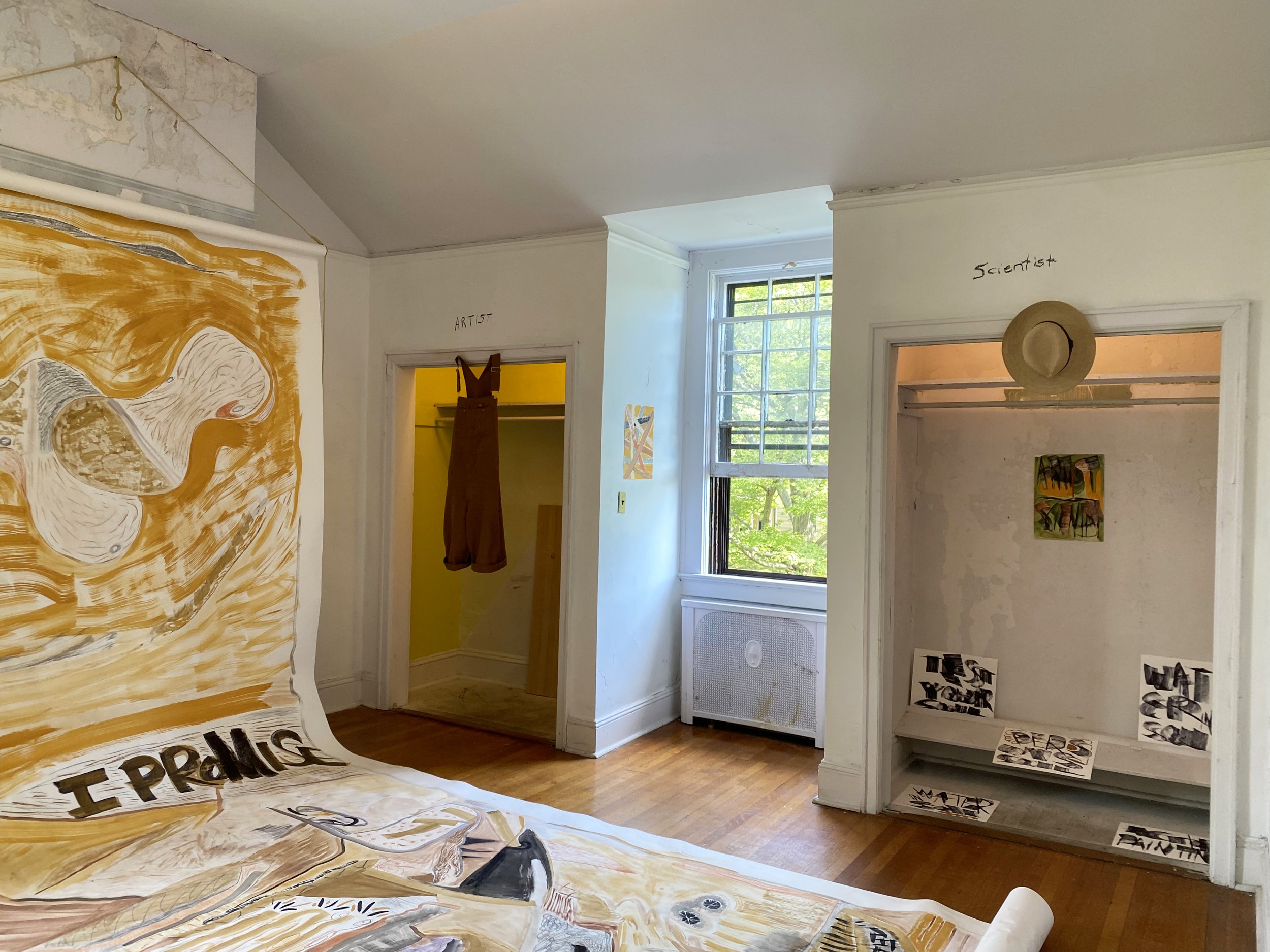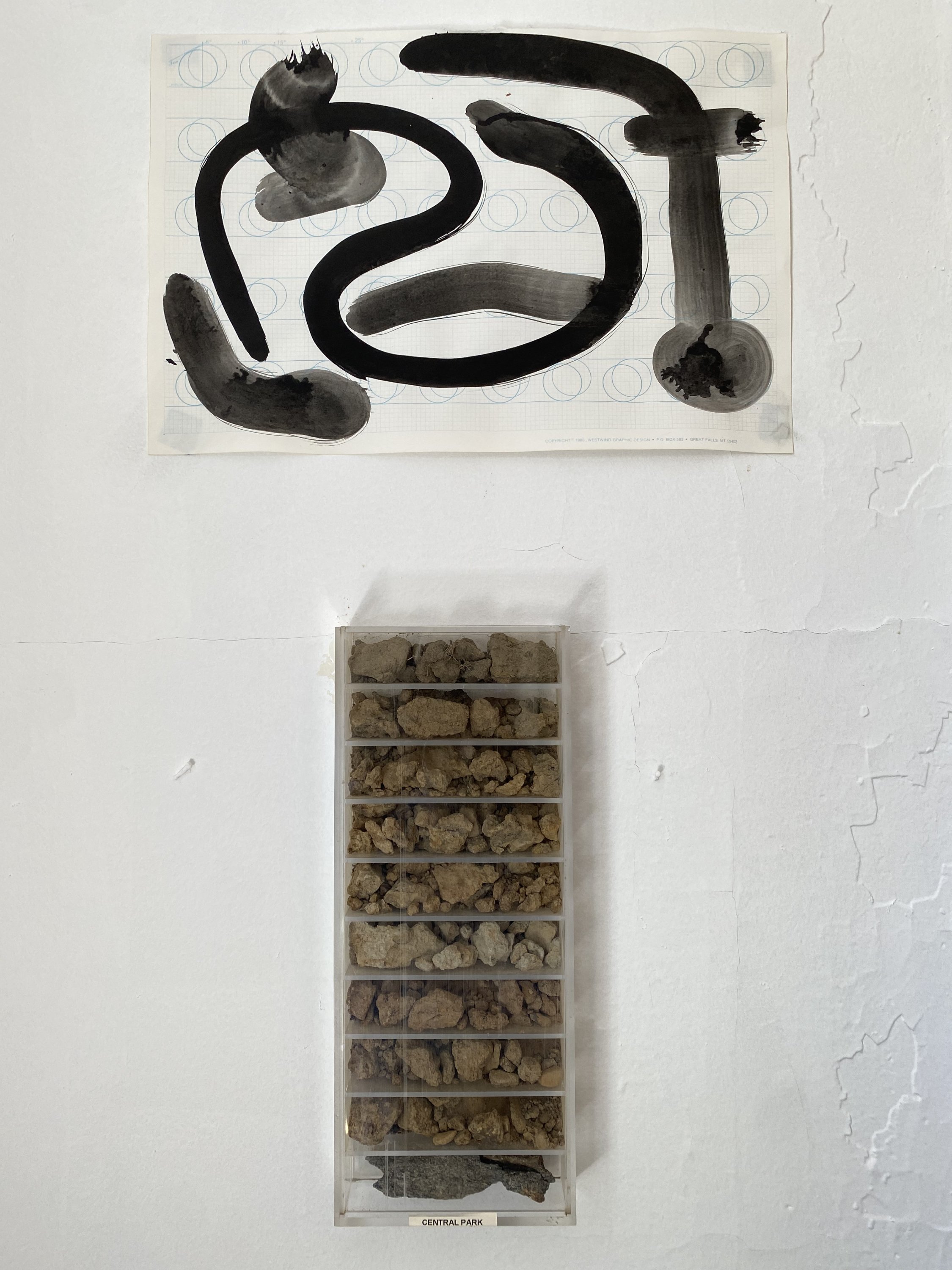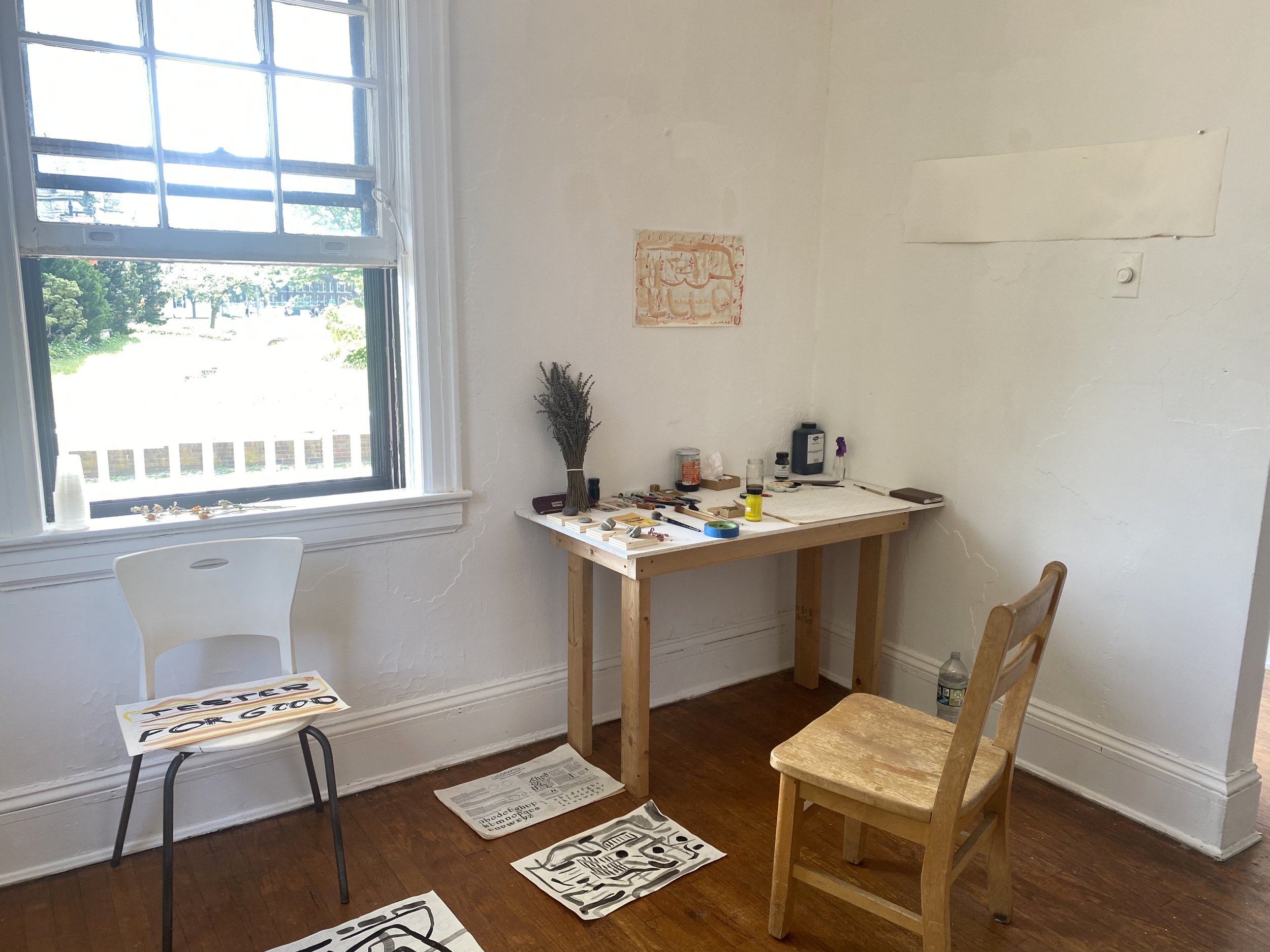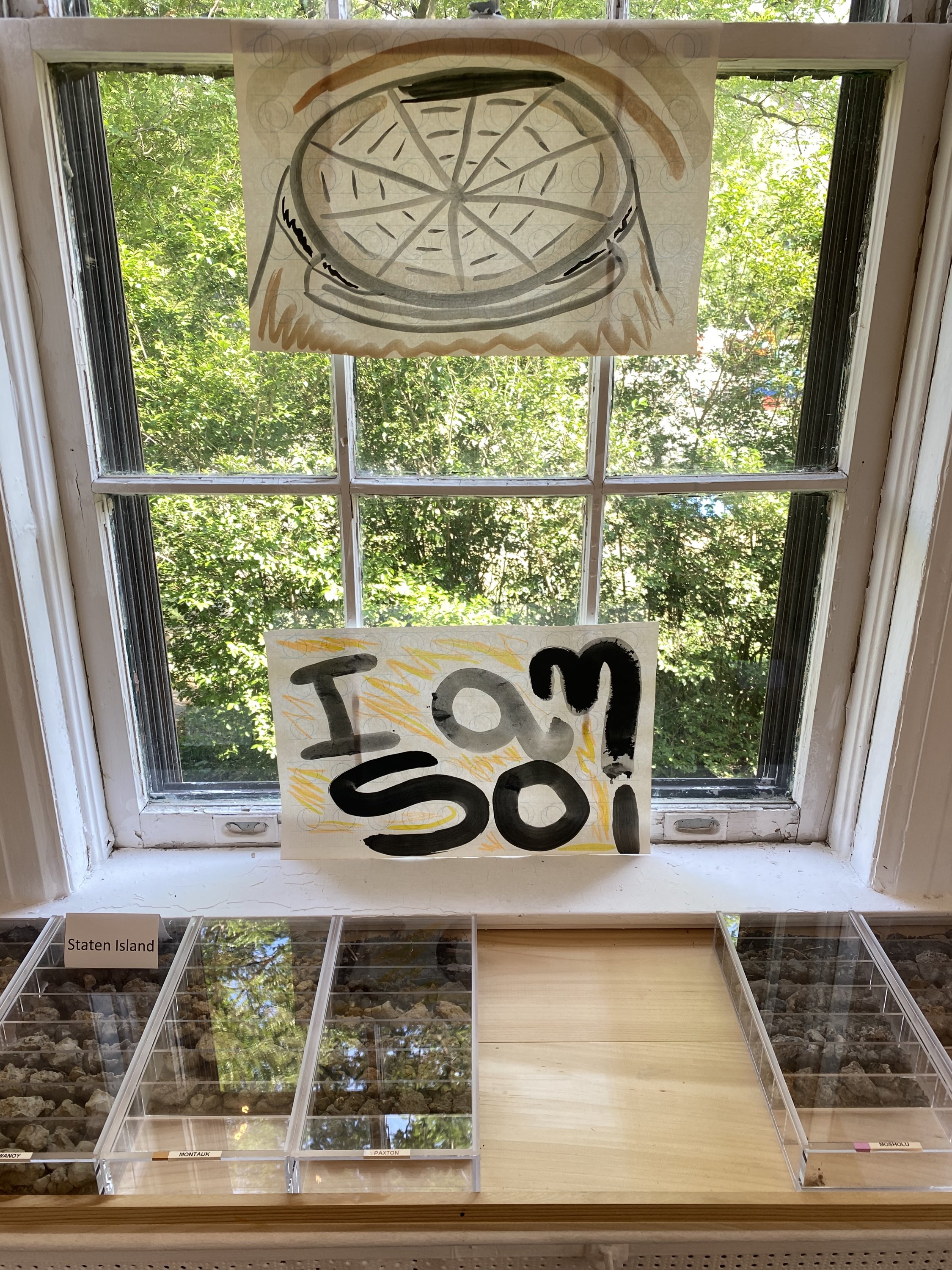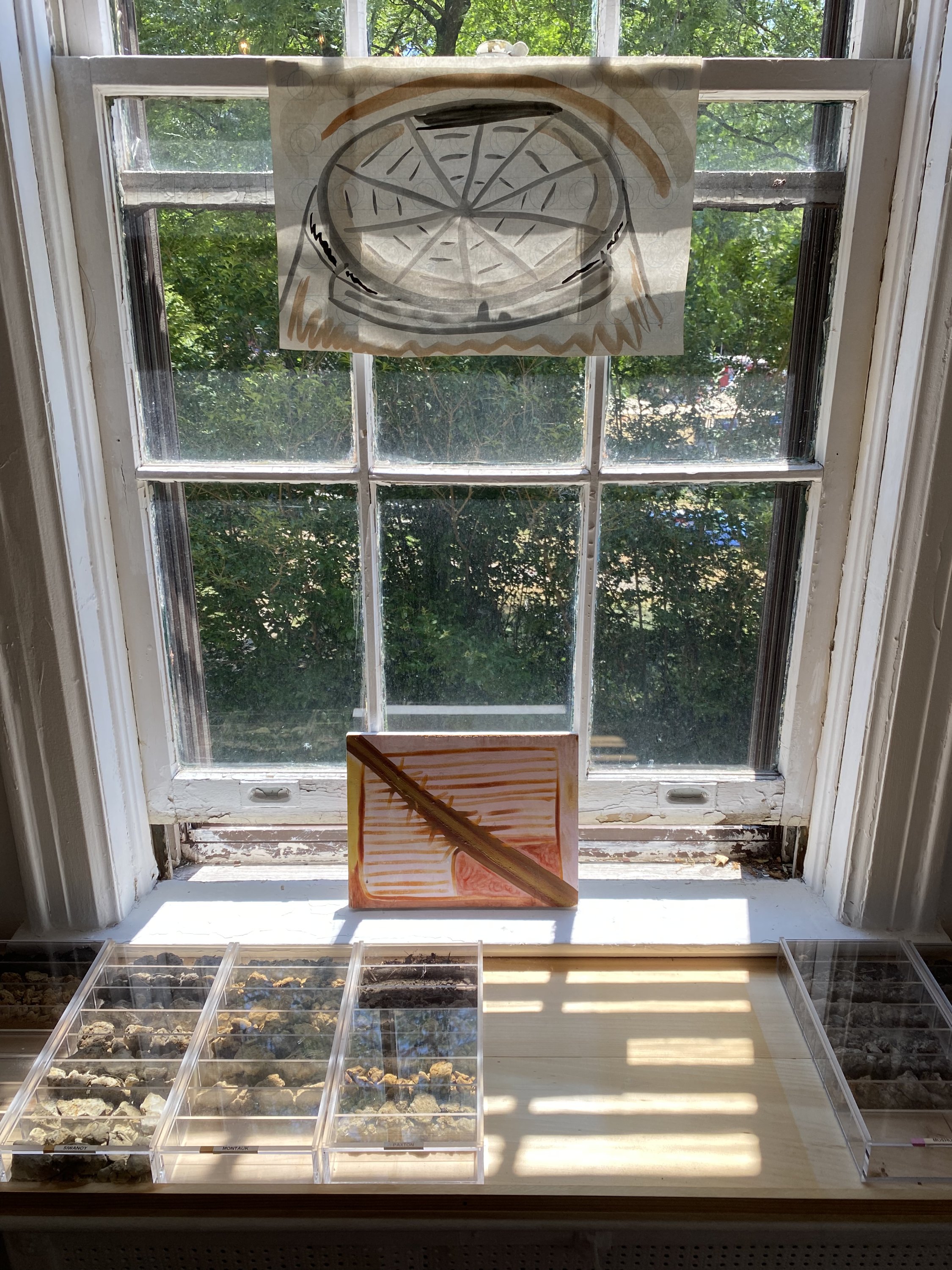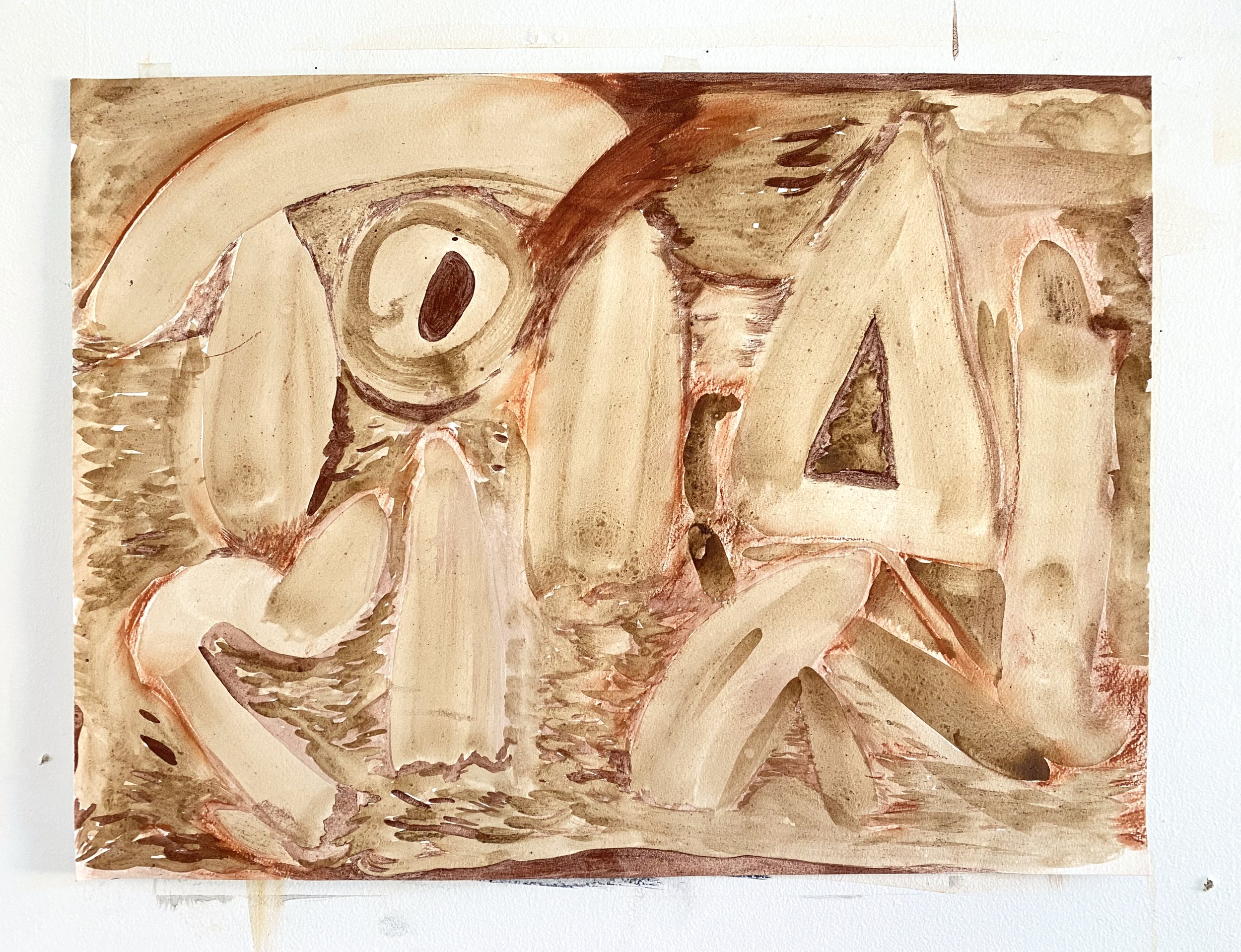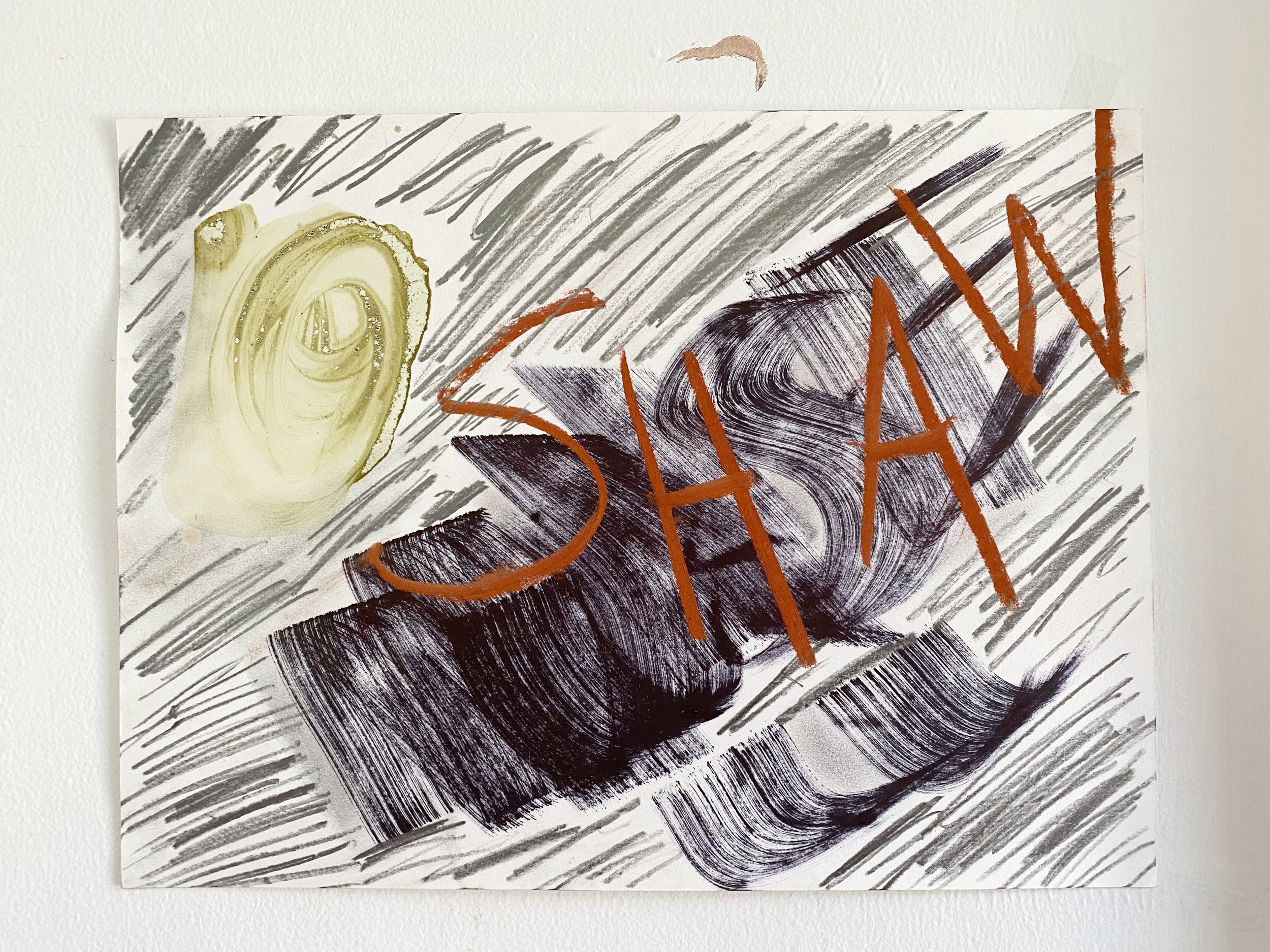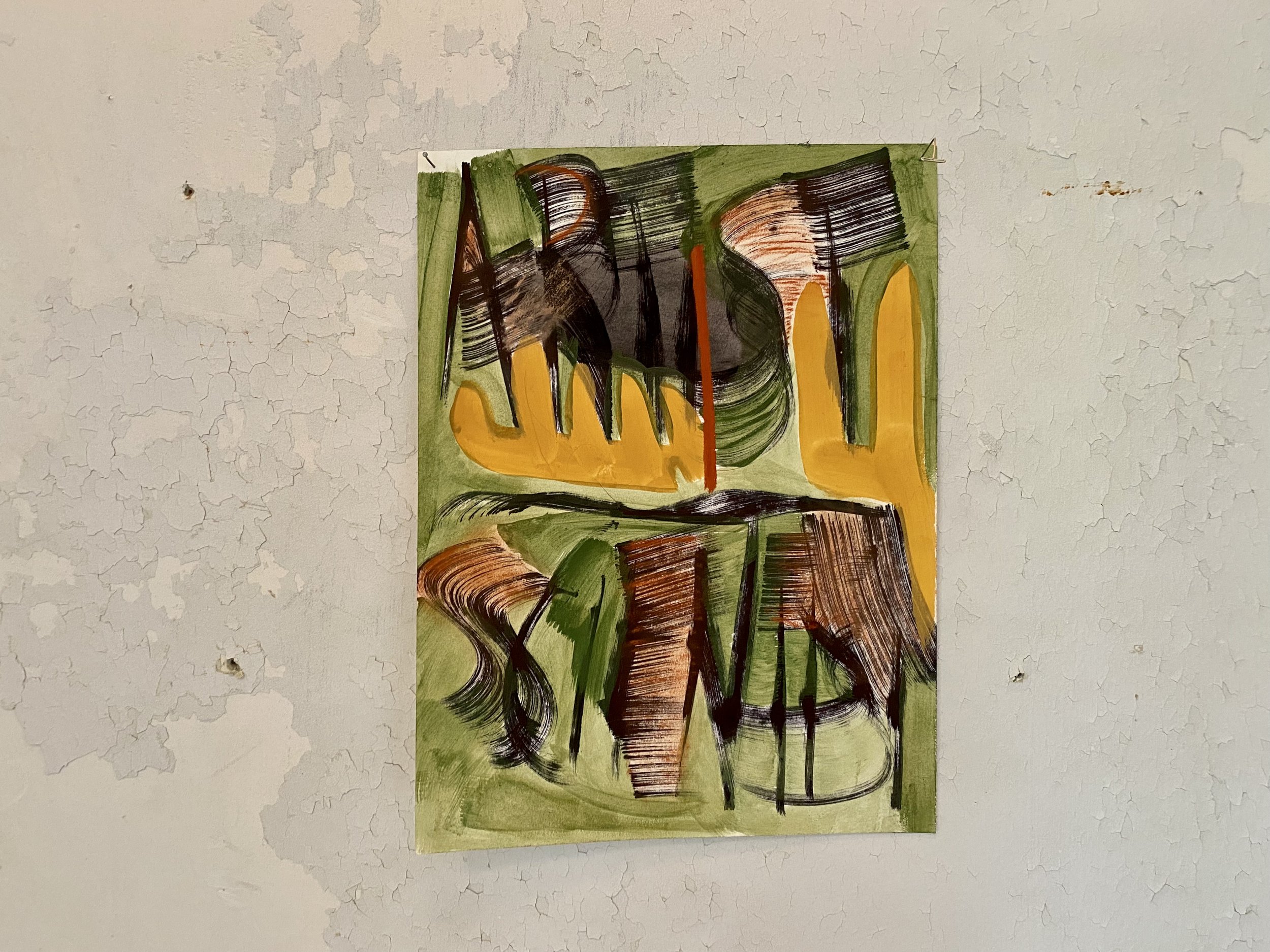Urban Soils Initiative: Residency at Swale House
Earth Action Painting
is a field manual for painters to outline the importance of soil testing by expression and note-taking. Drawn and painted during 10 days at the artists residency for the Urban Soils Institute at Governors Island, all colors used are suspended with compostable binders such as algae glue, rice starch, saponified shellac, and fish glue. Two liters of total water was used and recycled for washing earth, making paint, and cleaning brushes. This process has produced a fresh color derived from recycled materials. A 50 foot drawing on paper, Social Contract, was painted with purchased earth, and soil and plant colors found on Governors Island. Other works made at Swale House further include text-drawings related to the personalities of soil.
During soil-testing day, participants were taught how to make pigment from soil and make artist-grade paint. They were asked to bring at least ½ cup of soil from home or near home, the deeper in the ground the better.
An alternative proposal for cleaning brushes to avoid art materials seeping into our water system:
(for water-soluble, compostable-based paints, i.e. starch, gum arabic, fish glue - not water-suitable paints (acrylic)
First, gently wipe as much paint off of the brush with a smooth microfiber cloth. Using as little water as possible with a squeeze bottle and lukewarm water - never hot or cold - rinse the brush over a bucket to remove more paint. Squeeze the water out of the hairs, ferrule to tip. Try your best to never allow paint or water into the ferrule. Not an easy thing to do but with mindful practice your handling of the brush will get better.
Repeat if necessary.
You will be able to remove the majority of the paint this way. A slightly dirty brush will not make a difference to the clarity of your color unless of course, you are painting with white.
Fully wash the brush over the bucket with the same method as rinsing, using olive oil soap or any vegetable-based soap without added fragrance; these are best for your brushes as they condition the hairs. I recommend using an appropriate size lid or plate for the brush size, lathering the soap without mashing the hairs, using as little water as possible.
Rinse the brush and soap lid into the bucket, using as little water as possible.
Never leave your brush soaking in water.
Dry your brush by dabbing it with a second, clean micro-fiber cloth. Air-dry the brush by hanging it from the handle, hair side down. Do not force the drying of the brush, or your paintings by the way.
Using this method you’ll end up with very little water in your bucket. Pour off that water into a smaller glass container. With a small silicone spatula, scrape out all the remnants as if you’re salvaging the last of the ice cream. Let this dirty water sit for at least 24 hours undisturbed, don’t even let it sit by the window which rattles with a passing subway. Later, pour off as much of the water which has separated from the sludge into your wash bucket. You can reuse this water for washing more brushes that day and even use it to paint with. Again, you might not want to use this wash water if you are painting with white. Or if you just want the cleanest recycled water possible, run it through a carbon water filter. Let the sludge dry out in the sun and you’ll end up with a unique brown, gray, or black pigment. A well-known paint company calls this pigment, Torrit Grey.
You can dump the wash water into your local soil if you did not use soap.
Some of the surfactants in the soap will remain in the water or the pigment sludge. My aging paint tests do not show any sign of a weakening paint film. Further analysis is necessary to determine whether the small amount of vegetable soap is harmful to the soil. For extra precaution, dump the water into cat litter and dump it with landfill waste.
Lastly, do not use paper towels or similar instead of a microfiber cloth. Reuse the microfiber cloths until they are exhaustingly dirty and cannot absorb any more paint. Do not wash. Throw the cloth away in landfill waste once it is dry.
Two liters were used to make this work during 10 days.
Soils for the People!
The Soils Survey can help us understand…
What kind of remediation or restoration techniques will be most effective for the soil
What is the best land use for the area: should it be a park, a wetland, a preservation?
The diversity of soils and their diverse microbiomes: what microbes are restoring our soils?
How the soils are remediating contamination
How to increase interactions with soils which leads to improved physical and mental health
How can we mine heavy metal contaminants out of soil for reuse
(excerpt from USI’s Project Soils Room)








